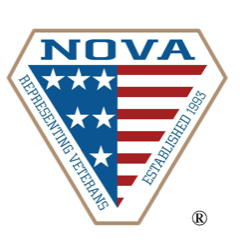LICENSE NOT FOUND OR INVALID
Social Security Claims
Social Security Disability (SSDI) for Veterans
For permanent and total veterans at the 100% level, you could be eligible for Social Security disability insurance (SSDI) benefits in addition to disability compensation or unemployability benefits (TDIU). The Social Security program for workers and veterans functions like an insurance plan. It is administered by the Social Security Administration (SSA). There are requirements that a claimant for disability insurance must have:
• Contributed to the program (paid Social Security taxes) over a sufficiently long period to be “fully insured” and
• Contributed to the program recently enough to have “disability insured status.”
For those over the age of 31, generally, significant work for five years out of the last 10 satisfies this requirement. However, insured status will lapse five years after stopping work for veterans with a steady work record. Many veterans might stop working because they’re receiving TDIU, so it’s important for veterans who believe they qualify for SSDI to claim this benefit before their disability-insured status expires.
For most claimants under 50, it is necessary to show that they can do neither a wide range of “sedentary work” nor a wide range of “light work.” For many veterans with musculoskeletal injuries covering most of their body, proving you can’t do light, medium, or heavy work is pretty straightforward. Proving you can’t do sedentary work, on the other hand, tends to be the sticking point.
Ultimately, most cases determine whether you can prove you cannot do sedentary work. For one thing, you have to verify that your condition will last for years or until your death. Moreover, proving this requires a deep dive into your conditions and determining the severity of exertional and non-exertional impairments.
· Exertional abilities involve sitting, standing, walking, lifting, carrying, pushing, and pulling. A limitation of any other work-related ability is a non-exertional limitation.
· Non-exertional abilities involve alternating sitting and standing, difficulties relating with others, and poor stress tolerance.
Many impairments have both exertional and non-exertional implications—the more impairments, the more the range of sedentary work that a claimant can do whittles away. The goal is to get to a point where SSA cannot come up with a job you can do. And if they can come up with a job, if there aren’t enough available in the national job market, they will ultimately conclude you are incapable of sedentary work (which means you win your case!).
For Veterans in particular, PTSD and several PACT Act conditions are common qualifying impairments for disability benefits as long as a veteran was able to perform the work they did before their diagnosis. This is very easy to prove if a veteran was in the military for ten years and recently discharged. The SSA will usually concede that veterans cannot do their prior work. An SSDI case will often need a vocational report or a medical opinion to prove these requirements. Medical records, in particular, are required to verify the diagnosis, the prognosis, and the effect the impairment has on a veteran’s ability to hold down a job. Please don’t be stubborn about seeing the doctor; it won’t help your case!
This all seems straightforward. If it doesn’t, you do not have to navigate the process alone. To win a case, a veteran must meet a million exceptions and specific deadlines. Missing a deadline could mean starting a case over from the beginning. Don’t shoot yourself in the foot! We can help.
We understand veteran-specific issues, and if you’re a 100% P&T veteran who isn’t working, there is a chance you aren’t maximizing your entitlements. Let us take the burden off your shoulders so you can focus on what matters most in your life. Contact us today.




